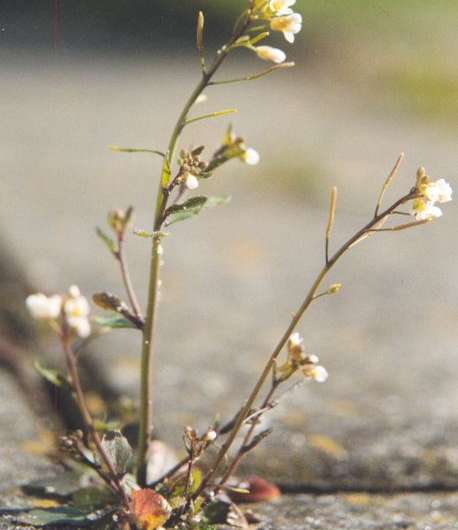Scientists trace plant hormone pathway back 450 million years

Purdue scientists got a glimpse into more than 450 million years of evolution by tracing the function of a hormone pathway that has been passed along and co-opted by new species since the first plants came onto land.
Flowering plants today, known as angiosperms, use the phytohormone abscisic acid (ABA) to keep seeds dormant until ready for germination and to open and close stomates, tiny openings on leaves used to control gas exchange.
"This hormone is important for drought tolerance," said Jody Banks, Purdue professor of botany and plant pathology. "When plants are water-stressed, ABA levels shoot up and close the stomates so the plants won't wilt as quickly."
It was unclear, however, what kind of role ABA played in ferns and other lycophytes, which Banks studies. Like many of her peers, Banks assumed that ABA would also play a role in stomate function.
But when she developed a line of mutant ferns that could not process ABA, she found that there was no difference between her mutants and wild type ferns that were water-stressed.
Banks shelved the research for nearly two decades before teaming with scientists at Australia's University of Tasmania and Germany's University of Würzburg. Together, they determined that ABA plays a key role in determining the sex of ferns, using a mechanism that was co-opted by flowering plants to tolerate desiccation.
Matching the genes of Arabidopsis, a model flowering plant, and the fern Ceratopteris richardii, scientists at the University of Tasmania found the homologous fern gene responsible for ABA signaling. Scientists at the University of Würzburg then found that the proteins produced when the ABA signaling pathway is turned on do not interact with proteins that would open and close stomates. They realized that regulating stomate closing by ABA was novel to angiosperms, which evolved from ferns about 150 million years ago.
ABA, they found, promotes femaleness in ferns. When a wild type plant is exposed to ABA, the plant becomes female. When ABA pathways are disrupted, as with the mutants Banks studied, the plants become male, even in the presence of ABA. They also discovered that ABA is linked to spore dormancy in ferns, just as ABA is linked to seed dormancy in angiosperms.
"Promoting a dormant state was likely the original function of ABA as plants came up out of the water onto the land," Banks said. "You wouldn't need that dormancy if you were living in water. But on land, you need to have dormancy to survive desiccation."Banks and her colleagues will continue studying other ABA pathways in lycophytes and ferns, as well as hormones that control of sex of plants.
The study is published in the Proceedings of the National Academy of Sciences.
More information: Abscisic acid controlled sex before transpiration in vascular plants, PNAS, www.pnas.org/cgi/doi/10.1073/pnas.1606614113
Journal information: Proceedings of the National Academy of Sciences
Provided by Purdue University




















